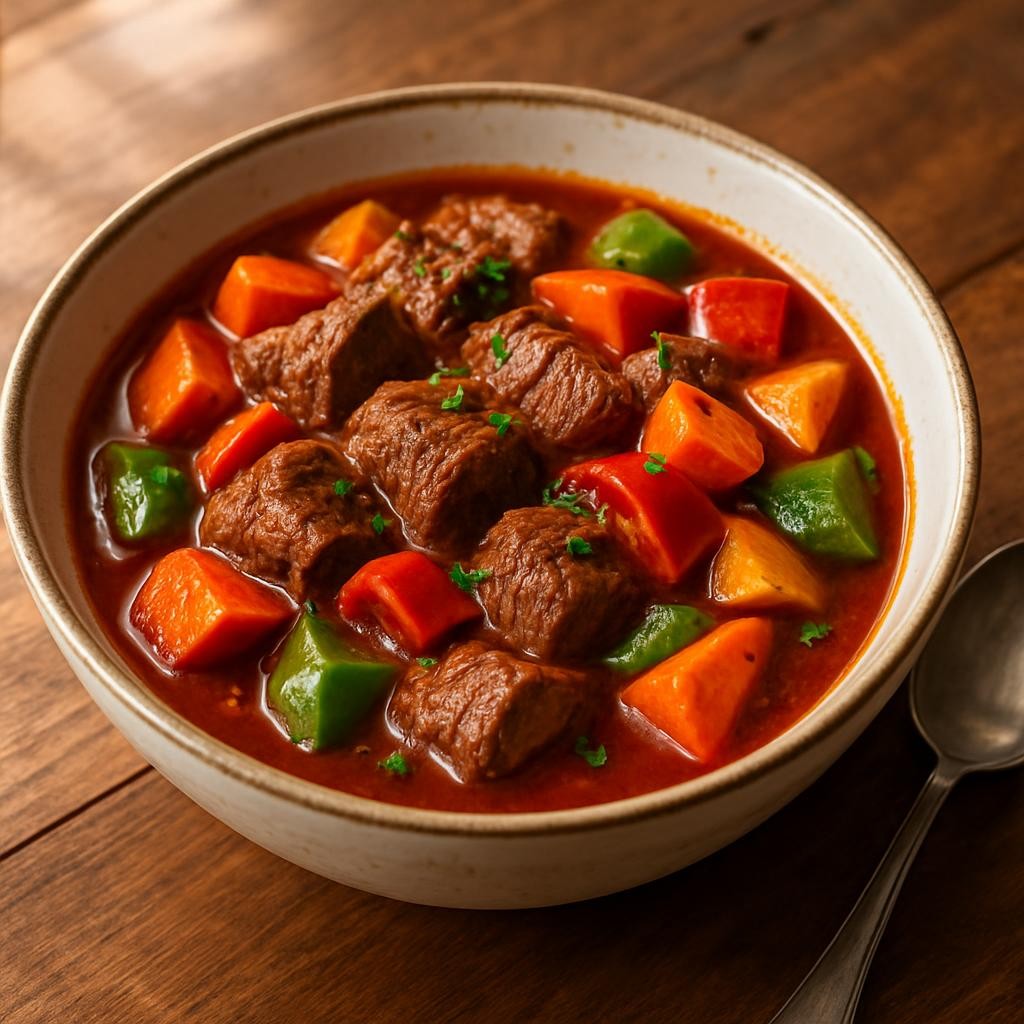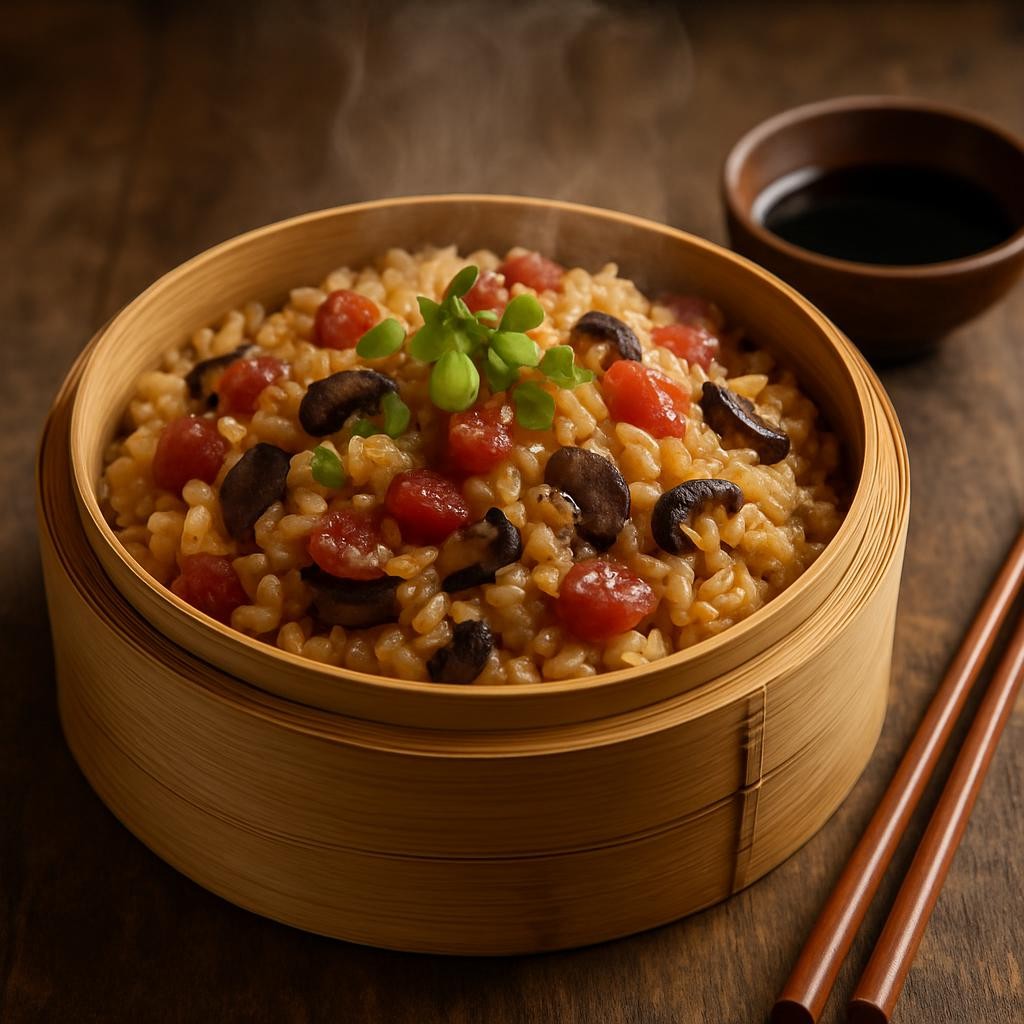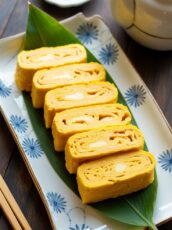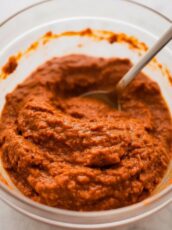Pandesal, the iconic Filipino Bread Roll, is a beloved staple in households across the Philippines. With its slightly sweet flavor and soft, pillowy texture, pandesal is perfect for breakfast or as a snack any time of the day. Traditionally made with simple ingredients like flour, sugar, yeast, and milk, these rolls have a delightful golden crust and a soft, airy interior that invites you to take a bite. Whether enjoyed fresh out of the oven or filled with your favorite spreads, pandesal is a comforting treat that warms the heart and brings people together.
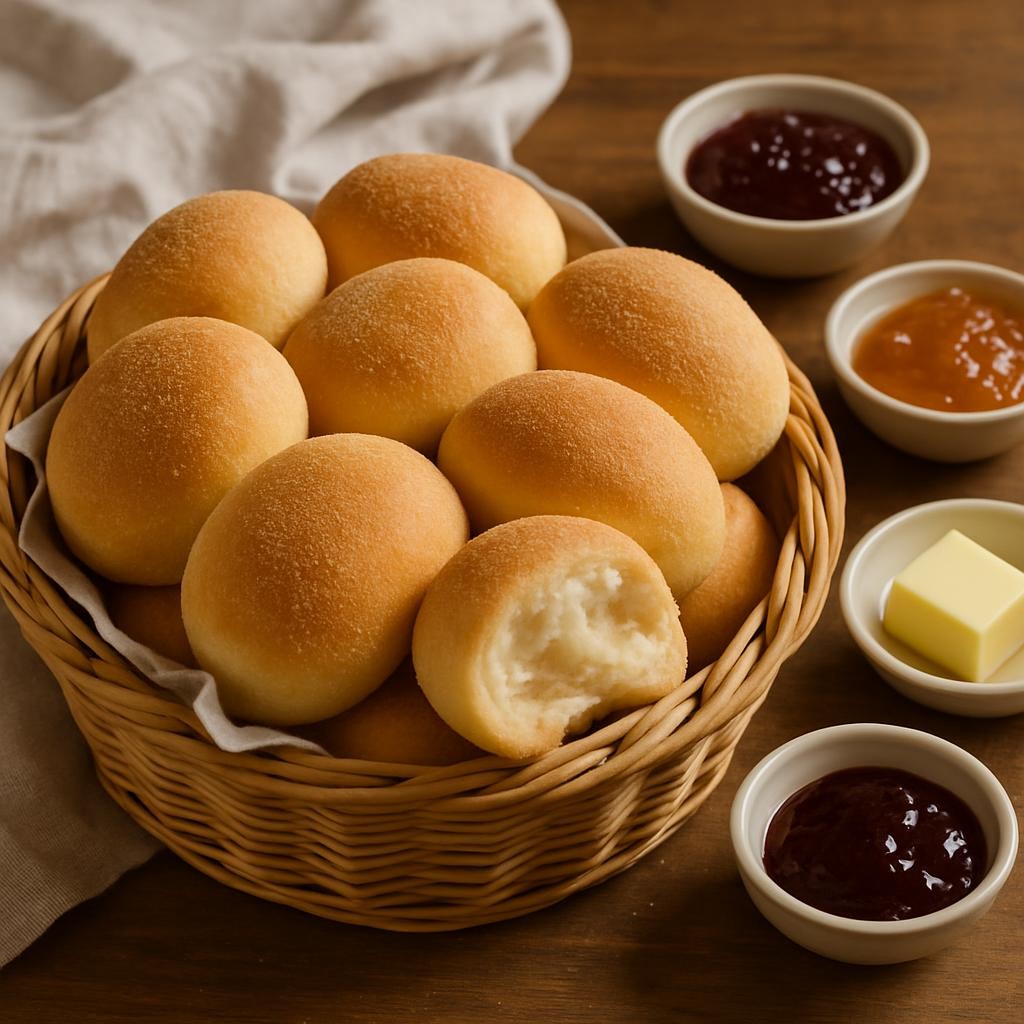
Why You Will Love This Recipe
You’ll love this pandesal recipe because it strikes the perfect balance between simplicity and flavor. The sweet, buttery notes of the bread make it a delightful addition to any meal, while its soft texture is a comforting experience for your taste buds. The ease of preparation is another bonus; even novice bakers can whip up a batch with relative ease. Plus, pandesal fits well into various diets, whether you’re looking for a quick breakfast, a snack with your coffee, or a versatile roll to accompany your favorite dishes.
Tips and Tricks
- Use Fresh Yeast: For best results, always use fresh yeast. If your yeast is old, it may not rise properly, leading to dense rolls.
- Knead Well: Knead the dough until it’s smooth and elastic. This step is crucial for achieving that fluffy texture.
- Let it Rise in a Warm Place: To encourage rising, place your dough in a warm, draft-free area. If your kitchen is cool, you can preheat your oven to the lowest setting for a few minutes, then turn it off and let the dough rise inside.
- Don’t Overcrowd the Baking Tray: Give each roll enough space to expand while baking; this will result in a lighter, fluffier roll.
Make Ahead Tips
To make your pandesal preparation easier, you can prepare the dough in advance and refrigerate it after the first rise. Simply shape the rolls and place them on a baking tray, cover with plastic wrap, and refrigerate overnight. The next day, allow them to come to room temperature and rise again before baking. If you have leftover pandesal, they can be frozen after baking. Just make sure to wrap them tightly in plastic wrap and store them in a freezer-safe bag.
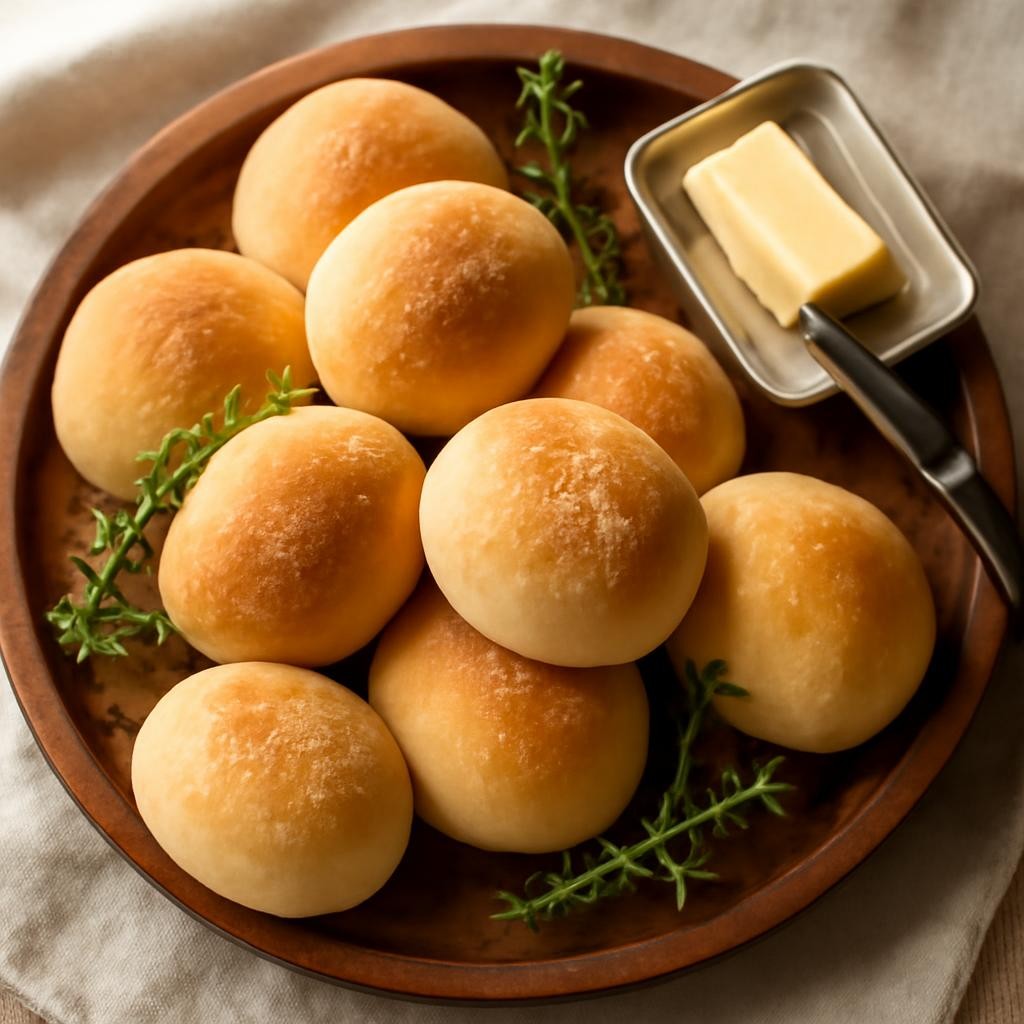
Recipe Variations
Feel free to get creative with your pandesal! You can add ingredients such as cheese, chocolate chips, or even ham to the dough for a savory twist. For a healthier option, substitute part of the all-purpose flour with whole wheat flour. If you want to infuse some flavor, consider adding a pinch of cinnamon or vanilla extract to the dough.
How to Serve
Pandesal is best served warm, fresh from the oven. You can enjoy it plain, but it also pairs beautifully with butter, jams, or cheese. For a delicious breakfast, slice it open and fill it with scrambled eggs or your favorite breakfast meats. Presentation-wise, arrange the rolls on a rustic wooden board or a pretty basket lined with a clean cloth for a charming touch.

Pairing Suggestions
These delightful rolls pair well with a steaming cup of coffee or a glass of fresh fruit juice. For a more indulgent pairing, consider serving them with a rich chocolate drink like tsokolate. Complement your pandesal with side dishes such as a vibrant fruit salad or a light salad to balance out the sweetness of the rolls.
How to Store
To store leftover pandesal, keep them in an airtight container at room temperature for up to 3 days. If you want to keep them longer, they can be frozen for up to 2 months. To reheat, simply place them in the oven at 350°F (175°C) for about 5-10 minutes, or until warmed through.
Equipment Needed
You will need a large mixing bowl, a baking tray, parchment paper, and a kitchen towel. A stand mixer is optional but makes the kneading process easier. If you don’t have one, a simple wooden spoon and your hands will work just fine!

Dietary Adaptations
For a vegan option, substitute milk with almond milk or soy milk and use coconut oil or vegan butter instead of regular butter. You can also use gluten-free flour for a gluten-free version, though this may require additional adjustments to the liquid content of the dough.
Seasonal Adaptations
In the winter months, consider adding spices like nutmeg or ginger to give your pandesal a warm flavor. In summer, you can incorporate fresh herbs or even citrus zest for a refreshing twist.
Recipe FAQs
Can I use instant yeast instead of active dry yeast? Yes, you can use instant yeast without proofing it beforehand. Just mix it directly with the flour.
How long do I bake the pandesal? Bake for about 12-15 minutes, or until they are golden brown and sound hollow when tapped.
Can I make pandesal without an oven? Yes! You can steam them if you don’t have an oven. Just ensure they are in a steamer basket and steam for about 15-20 minutes.
Pandesal (Filipino Rolls)

Pandesal, the iconic Filipino Bread Roll, is a beloved staple in households across the Philippines. With its slightly sweet flavor and soft, pillowy texture, pandesal is perfect for breakfast or as a snack any time of the day.
Ingredients
- 4 cups all-purpose flour
- 1 cup warm milk (about 110°F or 43°C)
- 1/3 cup granulated sugar
- 2 teaspoons active dry yeast
- 1/2 cup unsalted butter, softened
- 1 teaspoon salt
- 2 large eggs
- Extra flour for dusting
- Breadcrumbs for coating
Instructions
- In a small bowl, combine warm milk and sugar. Sprinkle yeast over the top and let it sit for 5-10 minutes until frothy.
- In a large mixing bowl, combine flour and salt. Make a well in the center and add the yeast mixture, eggs, and softened butter.
- Mix until a dough forms, then knead on a floured surface for about 10 minutes until smooth and elastic.
- Place the dough in a greased bowl, cover with a damp cloth, and let it rise in a warm place for about 1 hour or until doubled in size.
- After the dough has risen, punch it down and knead for a minute. Divide it into small pieces (about 1.5 oz each).
- Shape each piece into a ball and roll in breadcrumbs. Place on a lined baking tray, leaving space between each roll.
- Cover the rolls with a cloth and let them rise for another 30 minutes.
- Preheat the oven to 350°F (175°C). Bake the rolls for 12-15 minutes or until golden brown.
- Remove from the oven and let them cool slightly before serving.
Nutrition Information:
Yield: 24 Serving Size: 1Amount Per Serving: Calories: 156Total Fat: 5gSaturated Fat: 3gTrans Fat: 0gUnsaturated Fat: 2gCholesterol: 26mgSodium: 109mgCarbohydrates: 24gFiber: 1gSugar: 3gProtein: 4g
Asianplated.com, occasionally offers nutritional information for recipes contained on this site. This information is provided as a courtesy and is an estimate only. This information comes from online calculators. Although allchickenrecipes.com attempts to provide accurate nutritional information, these figures are only estimates.
Final Thoughts
Making pandesal at home is a rewarding experience that fills your kitchen with delightful aromas and your heart with joy. With its slightly sweet flavor and soft texture, pandesal is not just a bread roll; it’s a piece of Filipino culture that brings comfort and nostalgia. Whether you enjoy it with a cup of coffee or share it with loved ones, this recipe is sure to become a cherished favorite in your home. Happy baking!

